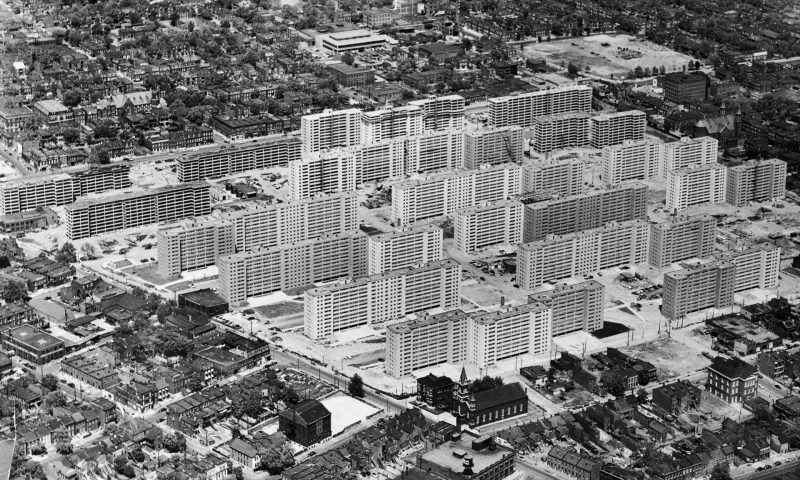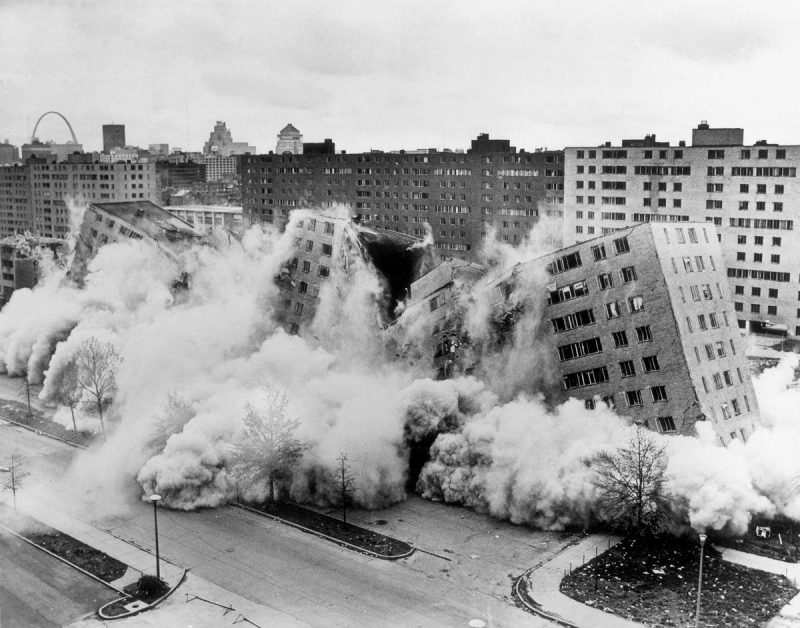RADICAL ( ANTI ) DESIGN : AN ARGUMENT AGAINST MODERNIST (SPECULATIVE) DESIGN
Posted on November 12, 2018“There is no modernity without coloniality and that coloniality is constitutive, and not derivative, of modernity. This is the basic condition of border thinking: the moment you realize (and accept) that your life is a life in the border, and you realize that you do not want to “become modern” because modernity hides behind the splendors of happiness, the constant logic of coloniality. For precisely this reason, border thinking that leads to decoloniality is of the essence to unveil that the system of knowledge, beliefs, expectations, dreams, and fantasies upon which the modern/colonial world was built is showing, and will continue to show, its unviability.” (1) ― Walter D. Mignolo

In 1922 Le Corbusier wrote ‘Architecture ou Révolution’… ‘It is the question of building which lies at the root of the social unrest of today; architecture or revolution’. (2) Like many of his colleagues in the Modernist movement, Le Corbusier was convinced of the role of architecture, and design in general, as a social tool. Specifically, he was concerned with design as a tool to keep the threat of political revolution at bay. As history played out, we saw his utopian visions of the future fail: the model of the “radiant city” led to a number of failed public housing projects in post-industrial urban America that had lasting divisive effects, reinforcing negative stereotypes and giving birth to public policies for the organization of our cities that are founded upon racist ideals. These failed experiments in utopian modernism hurt the most vulnerable groups in urban America at the time, the poor (black and brown) migrant south, which has had a lasting legacy in the generations that have followed, and the scars of their collapse are still painfully visible today.

Speculative design, as a practice that is grounded in imagining idealistic futures and lacking the hard “solution” that often drives design practices, is valued within the communities of its practitioners, as a tool for social change. Design scholars Dunne and Raby suggest that the potential of speculative design lies in it’s ability to help us to not only reimagine our definition of reality, but also to redefine our relationship to reality inso as to accept multiple realities, generating a “multitude of worldviews, ideologies, and possibilities” (3). Speculative design has been critiqued as a sort of evocative, product-driven way of imagining futures with no real awareness of the root of global problems, used as a sort of tool to provoke discussion and stir critical review of the status quo of modern design practice. The problem here is that in imagining these modern, dystopian solution-scenarios, much of the discussion stays within the realm of academic or professional design practitioners, which is a space that is historically coupled with one specific–and therefore limited– ‘reality’ that ignores the urgency of the problems we are trying to “solve” for many people in the world. As in the case of Le Corbusier’s “radiant city”, we can see that the danger not only lies in speculation’s inability to formulate a concrete solution…but also in the devastating and real affects of putting these utopian fantasies into practice without considering the capitalist power structures, market pressures, and social context that can have real effects for the “subjects” of the experiment. Speculative design can— at best— fail to provide real-world problems to people in need, and—at-worst—fail to acknowledge that experimental design can have lasting harmful effects for real people if that experiment fails.
This is certainly not to say that there is no value in the avant-garde status-quo-challenging design that speculation often allows for. I do believe, though, that it is time for a paradigm shift in the design community that radically challenges specifically, beyond our relationship with reality (as Dunne and Raby propose), the backdrop of capitalist coloniality against which all modern design is currently measured. Looking back to the case of Le Corbusier and the devastating outcome of the utopian fever dream that was the radiant city, can we reimagine speculative design, not as a tool to prevent political revolution, but as a tool to enable it? If so, what would a radical, revolutionary design look like? I challenge fellow design students and practitioners to not only ask ourselves if speculative design can be instrumental…but also, can it be radical?
Pedro Oliveira and Luiza Prado offer an exceptional and straightforward guide to decolonizing design in their “Cheat Sheet for a Non- (or Less-) Colonist Speculative Design” (4). Drawing from that framework. Looking to design practices from what Dunne and Raby call the “hight point of radical design” (3) — 1960’s and 1970’s— I’d like to propose the following provocations to consider in this reimagining of a (more) radical speculative design.
SPECULATIVE DESIGN WITHIN A RADICAL FRAMEWORK
- Accept design as an ongoing process, and place more value on the dynamics of making and interpreting than on some “output” (a la Superstudio & Archizoom).
- Merge “Art” and “Design”. Art, and generally “the aesthetic”, has great value and power as a tool for social and political change. The design profession should step down from its academic pedestal and embrace art as an integral part of its practice.
- Reject modernist aesthetic as the end-all be-all. Modernism breeds isolation and is not accessible.
- Consider and refer to ancestral tradition and teaching. What can we learn about emergent design from generations before us/pre-colonial ways of organizing and creating?
- Always consider your project within a global context. Nothing exists in a bubble, and we should be proactive about thinking through potential consequences of projects beyond the country in which we are working.
- Design processes should be multi-disciplinary in nature, and not just as a novel / experimental exercise.
- When planning a design project (or process) consider your biases and actively counteract them opposing voices and perspectives.
- Privilege female, native, black, and brown voices in design over any others. I would argue that pluralism as such is not the answer. If the goal is to “level the playing field” in terms of the voices that are represented, these need to be amplified first.
- Rethink the idea that symbolically “violent design” is bad…ask yourself, violent for whom? Is it okay to for symbolic violence to persist in design if it flips the historically upheld power dynamics?
Erica Eisenberg
————————————————————————————————————
- Mignolo, Walter. Local Histories/global Designs: Coloniality, Subaltern Knowledges, and Border Thinking. Princeton, NJ: Princeton University Press, 2012.
- Almeida, Teresa. “LE CORBUSIER: HOW A UTOPIC VISION BECAME PATHOLOGICAL IN PRACTICE.” Www.wordpress.com (blog), March 5, 2013. Accessed November 12, 2018. https://orangeticker.wordpress.com/2013/03/05/le-corbusier-how-a-utopic-vision-became-pathological-in-practic/.
- Dunne, Anthony, and Fiona Raby. Speculative Everything: Design, Fiction, and Social Dreaming. S.l.: MIT, 2014.
- Oliveira, Pedro. “Cheat Sheet for a Non (or Less) Colonialist Speculative Design.” Medium. September 10, 2014. Accessed November 12, 2018. https://medium.com/a-parede/cheat-sheet-for-a-non-or-less-colonialist-speculative-design-9a6b4ae3c465.